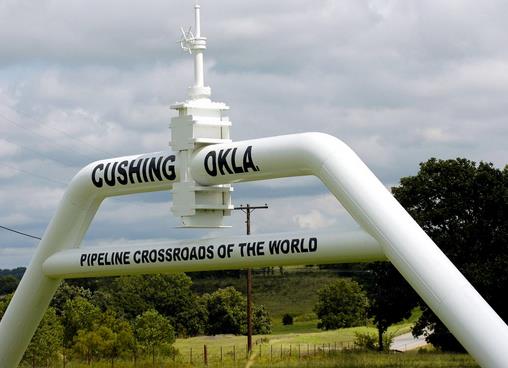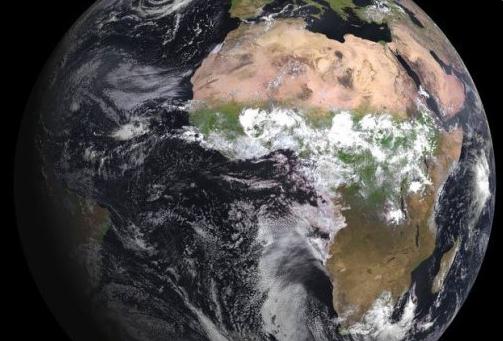15:37 15 hours and 37 minutes of daylight on June 21.
10:40 10 hours and 40 minutes of daylight on October 22.
Dark Days
"Hey Paul, are you looking forward to your cold, dark, snowy near-death experience? I think you refer to it as WINTER?".
My friend in Sarasota has such a great sense of humor. He belongs in Florida.
Yes,
in fact, I am looking forward to a quiet winter. No yard work, no bugs,
no humidity, football on the tube; a chance to fire up the sleds and
then nap with impunity.
We lost nearly 5 hours of daylight since
June 21 and some of us feel the need to hibernate; sleep in 'til the
crack of noon. We're dragging.
I run into more Minnesotans who
dread a lack of sunlight far more than wind chill or knee-deep
snowdrifts. A few sunny southern getaways during winter can help. So can
full-spectrum light bulbs that mimic the sun. I have one installed at
home right next to my favorite sofa. It does help.
As far as the
atmosphere is concerned it's the 3rd week of November. After a morning
freeze highs hold near 40F into Thursday, well below the average high of
56.
Would someone wake me when our weather becomes average again?
Upper
40s are possible Friday & Saturday, and latest guidance hints at
40s for Halloween Trick-or-Treating. No blizzards this year.
Hey, after 1991 I take NOTHING for granted.
* Amazon has a
wide selection
of full-spectrum light bulbs that mimic the sun and may help with SAD
(Seasonal Affective Disorder). No, I don't get a commission.
First Frost/Freeze.
3km HRRR models suggest the coldest morning lows will come south/west
of MSP this morning, some mid 20s expected from near Willmar to Glencoe
and Mankato. Source: NOAA and Ham Weather.
Not Exactly Indian Summer.
Everything is relative, and I'd wager a stale bagel that Friday and
Saturday will feel pretty good, compared to the sting you're feeling out
there right now. Upper 40s are predicted by the ECMWF model late week,
50+ Monday before cooling slightly Tuesday - highs may remain in the 40s
for Halloween. Graphic: Weatherspark.
84 Hour Snowfall.
The 12km NAM shows the impact of a narrow, compact Alberta Clipper,
laying down a carpet of 1-3" from near Sioux Falls to the Quad Cities to
near Peoria. Lake-effect snows are likely from the Minnesota Arrowhead
into northern Wisconsin and the U.P. of Michigan. Map: Ham Weather.
Colors Peaking Around MSP Metro.
Granted, the timing isn't great with 30s, flurries and a stinging wind
chill, but we may be past peak by next weekend, so this will be the week
to take in a free eyeful of color, maybe take the drive down Highway 61
toward Red Wing and Winona soon. Map:
Minnesota DNR.
Ask Paul. Weather-related Q&A:
I
have a weather question. Our snow shoveling service charges either by
the time or the month. By the time is a fee per snowfall of 2 inches or
more. By the month charges a flat fee for each month from November
through March. Snow events in October and April are extra. So my
question is how many snow events are there on average in St. Paul in a
typical November to March season? Snow events are accumulations of 2
inches or more. If there is a web site that has this info, a simple
cite to it would suffice.
Pat Diamond
Pat
- data from the local National Weather Service shows an average of 8-9
separate snowfalls every winter with 2" or more of snow between November
and March; what I would refer to as "plowable snows". We see an average
of two 2"+ snows in December, January, February and March - 5 days a
winter with 3" or more from a single storm.
Click here to see the NWS web site.
Wildfire Emergency Declared Iin Australia State As Homes Lost.
Bloomberg Businessweek has more details; here's the intro: "
Australia’s
most populous state declared an emergency as wildfires tore through
bushland west of Sydney, destroying hundreds of homes and threatening
mountain townships. New South Wales state Premier Barry O’Farrell signed
the order late yesterday, giving emergency services personnel the power
to forcibly evacuate people, tear down threatened buildings and cut off
power and gas supplies. More than 2,000 firefighters are battling 58
blazes across the state, including 14 that are uncontained, Rural Fire
Service Commissioner Shane Fitzsimmons told reporters today. The
nation’s bushfire season has started early after the warmest September
on record, and the emergency measures reflect receding chances of rain
to douse flames engulfing the Blue Mountains region 80 kilometers (50
miles) west of Sydney...."
Photo credit above: "
Firefighters
work on putting in containment lines to help control a wildfire near
the township of Bell, Australia, Monday, Oct. 21, 2013. Authorities
warned that high temperatures and winds were likely to maintain
heightened fire danger for days." (AP Photo/AAP Image, Dan Himbrechts).
Australia Braces For Potential "Mega-Wildfire".
AFP has the story; here's a clip: "
Mount
Victoria — Firefighters were battling an enormous blaze in southeastern
Australia Monday, with officials warning it could merge with another to
create a "mega-fire" if weather conditions worsen. Crews have been
fighting fires that flared in high winds and searing heat across the
state of New South Wales last week with more than 200 homes destroyed so
far and many others damaged. While dozens of blazes have been
contained, 63 were still alight and 17 of them were out of control,
enveloping Sydney in a thick white smoke haze that prompted warnings for
people to stay indoors and avoid exercise..."
Photo credit above: "
A
New South Wales Rural Fire Service volunteer puts out a fire in the
town of Bell, Australia, on Sunday, Oct. 20, 2013. Firefighters battling
some of the most destructive wildfires to ever strike Australia's most
populous state were focusing on a major blaze Sunday. Authorities warned
that high temperatures and winds were likely to maintain heightened
fire danger for days." (AAP Image/Paul Miller).
Hurricane Raymond Threatens Mexican Coast - Dire Fire Outlook For Australia. In today's 2:30
Climate Matters
video update from WeatherNation TV I take a look at a major, Category 3
hurricane precariously close to Acapulco (the worst of this storm
should remain just offshore). An even bigger story is evolving in
Australia, where they didn't have much of a winter. Temperatures were
unusually warm with very little rain and snow, setting the stage for
what may be the worst wildfire season in 40 years. Keep in mind it's
spring in Sydney, peak fire season is still 2-4 months away.
ENSO-Neutral, But Growing Signs Of Weak El Nino In 2014.
The graph above shows various model forecasts of ENSO, the natural
oscillation of wind and water in the Pacific. For several years we've
been in a protracted La Nina cooling phase, which may be temporarily
masking some of the atmospheric warming worldwide. There seems to be a
trend toward a slight warming by early 2014. The definition of El Nino
is water temperatures consistently .5C warmer than average for at least 3
consecutive months. Graph:
NOAA NCEP.
Flood Insurance Costs Soaring For Thousands Of Homeowners.
CNN Money has the story, more fall-out from Superstorm Sandy and rising sea levels; here's an excerpt: "
Homeowners
who live along the nation's coasts and river valleys are discovering
that changes made to the National Flood Insurance Program are causing
their insurance premiums to skyrocket at alarming rates. Earlier this
month, part of a new law, called the Biggert-Waters Insurance Reform Act of 2012, went into effect that phases
out flood insurance subsidies on hundreds of thousands of older homes.
The government has also been revising its flood zone maps and
reassessing the level of flood risk for various areas..."
Photo credit: George Kosimos. "
George Kosimos in his back yard, which FEMA has mapped out as a high risk of flooding."
Despite Severe Storms, Sales Of One Vital Policy Remain Low.
Are you covered for flooding? Most standard homeowners policies do NOT
include flood-related damage under claims - you need to purchase this
separately. In the wake of Sandy and major flash floods and river
flooding of recent years many Americans continue to take their chances.
Insurance Business Magazine has the story - here's an excerpt: "...How do you recover from something when you don’t have insurance?” she said. “
People
assume that these large-scale disasters will always be followed by a
federal emergency declaration that will help them out. That isn’t always
the case.” Producers need to ensure that their clients recognize the
importance of flood insurance, even if they feel the odds are in their
favor. “The big message here is, yes…we do get flash floods,” Walker
said. “It’s our most common natural disaster, and we really urge agents
to offer flood insurance to everyone and everyone should consider
purchasing it, weighing their risk...” (File photo: AP).
Sandy A Warning Rising Seas Threaten Nuclear Plants.
Climate Central
has a story focused on how rising sea level combined with more extreme
coastal storms and subsequent storm surges may threaten coastal nuclear
power plants; here's an excerpt: "
As Hurricane Sandy
barreled ashore a year ago, the storm forced the shutdown of several
Northeast coastal nuclear power reactors, including the Oyster Creek
plant on the Jersey Shore, which took the brunt of Sandy's huge storm
surge. Another reactor at Indian Point Energy Center north of New York
City shutdown because of power grid disruptions, and a third reactor in
southern New Jersey shutdown when Sandy knocked out four of its
circulating water pumps. No nuclear power plant in Sandy’s path was
in imminent danger of a meltdown, but the force and size of the storm
surge served as a warning that rising seas and higher storm surges,
driven in part by climate change, could eventually have a devastating effect on the seven low-lying nuclear power generating sites on the Northeast Coast in future hurricanes..."
Photo credit above: "
Indian Point Energy Center on the Hudson River in Buchanan, N.Y." Credit: Bobby Magill
California Residents Cautioned To Look Out For Yellow Fever Mosquito. Here's the latest from
The Los Angeles Times: "
A mosquito that can carry dengue and yellow fever
has been found in California, prompting intense eradication efforts in
the Central Valley and warnings from officials about how to keep the
pest from spreading. "It could change the way we live in California, if
we don't stop it," said Tim Phillips of the Fresno Mosquito and Vector
Control District. "Imagine not feeling safe to sit out in your backyard
in the afternoons." The yellow fever mosquito, or Aedes aegypti — a
white polka-dotted bug that bites during the day and can lay its eggs in
less than a teaspoon of water — was first detected in June in Madera..."
Photo credit above: "
The
yellow fever mosquito has been found in California, prompting intense
eradication efforts and warnings from officials about how to keep the
pest from spreading."
(AP / December 31, 1969).
"Nightmare" Bacteria Are Real, And The U.S. Needs To Act Fast.
I'm feeling better about the snow flurries and freezing temperatures.
No wonder people are afraid to turn on their TV's or computers. Here's a
clip from
The Washington Post: "
Last
spring, Arjun Srinivasan, an associate director of the Centers for
Disease Control and Prevention, delivered a presentation to state health
officials with some alarming information. Before the year 2000, he
said, it was rare to find cases of bacteria resistant to carbapenems, a
class of powerful, last-resort antibiotics. But by February 2013 they
had been seen in almost every state. Srinivasan also briefed Thomas
Frieden, director of the CDC. On March 5, Frieden issued a public
warning about “nightmare” bacteria, a family of germs known as CREs.
They can kill up to half the patients who get bloodstream infections
from them, resist most or all antibiotics and spread resistance to other
strains. Last month, Frieden released a report estimating that at least 2 million Americans get infections each year that are resistant to antibiotics and that at least 23,000 people die as a result..."
Image credit above: "CRE germs kill up to half of patients who get bloodstream infections from them. Source: CDC,
Centers for Disease Control and Protection.
For Too Long Sports Journalists Glossed Over Football's Violence.
I Was One Of Them. Here's an excerpt of a mea-culpa from a retired sportswriter, editor and columnist at
The Washington Post: "...
I
covered the NFL over four decades dating back to 1972. Now semi-retired
myself and five years removed from day-to-day football coverage, I have
one main regret: not focusing more of my reporting and writing on the
absolute brutality of the sport, particularly the painful post-football
lives of so many players. Instead, like many other sports journalists, I
spent much of my career writing positive pieces about the league and
its players — puffy features and breathless accounts of thrilling
victories and agonizing defeats. I certainly covered my share of serious
NFL warts: mounting injuries; the use of steroids and amphetamines; team doctors prescribing far too many painkilling pills and injections..."
Photo credit above:
John McDonnell/The Washington Post. "Washington’s
quarterback Robert Griffin III on the ground after getting a concussion
in the 3rd quarter of a game against the Atlanta Falcons at FedEx Field
in October 2012."
Who Needs Air Conditioning? Gizmag's Top-5 Passively-Cooled Homes. Here's an excerpt of an interesting article at
gizmag.com: "
Home
air-conditioning offers near-instant relief from hot weather but is
both expensive and resource-heavy to run. Gizmag picks five of our
current favorite passively-cooled homes that are environmentally
responsible to keep comfortably cool, and – perhaps just as importantly –
very desirable to live in..."
From Mary To Emma: 6 Decades Of Most Popular Girl's Names. Because inquiring minds want to know. Here's a clip from a story and interactive graphic from
jezebel.com: "
There will always be people out there picking weird names for their kids,
but when you look at the choices that make their way to the top you'll
see that Americans tend to play it safe. The maps above, based on data
from the Social Security Administration,
show the most popular baby names for girls by state, for babies born
from 1960 through 2012, with the colors representing the most popular
single name for that year..."
Can A $400 Blender Change Your Life? Yes.
Full disclosure: I have a Vitamix, and I love it. I'm eating (drinking)
healthier than ever, and you'd be amazed the number of different fruits
and vegetables that can be combined, blended to produce a surprisingly
drinkdable and healthy milkshake. Oh boy, I'm drinking the Kool-Aid
(literally). Here's a clip from
Slate: "
When you first buy a Vitamix 5200, the so-called Ferrari of blenders,
two thoughts are likely to pass through your mind. The first is “Did I
really just spend more than $400 on a blender?” And the second is “This
machine is going to change my life.” At least those are the thoughts I
had after I bought my Vitamix at a nutrition-related conference several
weeks ago. I hadn’t planned to make this purchase; I’d merely followed
some colleagues to the Vitamix demonstration stand, where a fast-talking
young man with a headset and an impressive dexterity with Dixie cups
was offering samples to an enthusiastic crowd.."
Climate Stories...
Weathering The Change.
USA Today has done a good job documenting examples where a morphing
climate is already having an impact on communities around the United
States. The site is
here.
Super-Large-Scale Solar Installations Are Surging In the U.S.
Quartz has the article - here's the introduction: "
Don’t
write Big Solar off yet. With the plunge in photovoltaic panel prices,
US utilities that once enthusiastically signed deals for massive solar
power plants to be built in the desert began to favor small
installations deployed near cities that don’t require the construction
of multi-billion-dollar new transmission lines. But a new report shows
that so-called utility-scale solar—which supplies more than 10 megawatts
(MW) of electricity from a central power plant—hit a new record in the
third quarter of 2013. So far this year, 1,081 MW of utility-scale solar has come online,
with the flip switched on 282 MW in the third quarter, according to
market research firm SNL. That’s a 15% spike over the third quarter of
2012..."
Climate Change: A Note From Our Letters Editors.
Yes, you're free to have whatever opinion you want to have. That
doesn't mean you're free to make up facts or cherry-pick data, as the
editors at the
Sydney Morning Herald point out; here's an excerpt: "...
We
do not ban writers whose views suggest they are climate change deniers
or sceptics. We consider their letters and arguments. But we believe the
argument over whether climate change is happening and whether it is
man-made has been thrashed out extensively by leading scientists and on
our pages and that the main debate now is about its effects, severity,
and what society does about it. Climate change deniers or sceptics are
free to express opinions and political views on our page but not to
misrepresent facts. This applies to all our contributors on any subject.
On that basis, a letter that says, "there is no sign humans have caused
climate change" would not make the grade for our page."
Image credit above: "
Five degrees hotter... our climate in 90 years." Digital illustration
Photo: Matt Davidson.
Global Warming Forecast For Amazon Rain Forest: Dry And Dying.
Live Science has an update on the troubling trends in the Amazon; here's the intro: "
The
Amazon rain forest's dry season lasts three weeks longer than it did 30
years ago, and the likely culprit is global warming, a new study finds.
Rain falls year-round in the Amazon, but most of the annual deluge
drops during the wet season. (The rainy season's timing varies with
latitude.) Scientists think that a longer dry season will stress trees,
raising the risk of wildfires and forest dieback. The forest's annual fire season
became longer as the dry season lengthened, according to the study,
published today (Oct. 21) in the journal Proceedings of the National
Academy of Sciences..."
Photo credit above: "
The rain forest canopy north of Manaus, Brazil." Credit: NASA LBA-ECO Project.
 U.S. Oil Supply Looks Vulnerable 40 Years After Embargo
U.S. Oil Supply Looks Vulnerable 40 Years After Embargo.
Shale oil helps our overall energy needs, but we are still vulnerable
to disruptions in oil supply lines, according to this article at
USA Today. Here's a snippet: "...
We
remain very vulnerable," Panetta says, adding it wouldn't take much for
members of the Organization of Petroleum Exporting Countries (OPEC) —
which launched the 1973 embargo — or terrorist groups like al-Qaeda to
disrupt supplies. He says the U.S. is using less oil per capita than
decades ago and relying on the Middle East for a smaller share of its
imports, but those shifts almost don't matter. World oil prices, which
largely determine what Americans pay at the pump, remain high, because
developing countries including China and India are driving up demand.
With global oil supplies so tight as a result, even a small disruption
rattles the markets and causes price spikes. That's why, despite a 50%
increase in U.S. oil production since 2008, the price for a regular
gallon of gas remains so high. It costs, in inflation-adjusted dollars,
twice as much as 40 years ago..."
Image credit
above: American Petroleum Institute, U.S. Energy Information
Administration, Institute for Energy Research, Michael Sivak and Brandon
Schoettle, University of Michigan;1 - Which is $20.12 in 2012 dollars. 2
- For Brent crude. 3 - For leaded regular, which is $1.85 in 2012
dollars. 4 - For regular. 5 - Average on-road performance. 6 - Average
sales-weighted fuel economy using the EPA window-sticker value. Janet
Loehrke and Joan Murphy USA TODAY.
In Canada's Alberta Province Oil-Sands Boom Is A Two-Edged Sword. What are the health implications of the Keystone XL Pipeline?
The Los Angeles Times takes a look at environmental and health impacts already observed in Alberta, Canada - here's an excerpt: "...
Three
weeks ago, government scientists told villagers that they had found
high levels of mercury, a hazardous substance, in the eggs of migratory
birds that nest downstream from oil sands production. Fishermen say
pickerel and northern pike in the lake show bulging eyes and other
deformities. Three studies by independent scientists have shown rising
concentrations of pollutants, including carcinogens, in waterways near
Alberta's oil sands production. Industry officials and the Alberta
government have long insisted that the chemicals detected in area
waterways are naturally occurring, not the result of pollution. They
also say they are taking full safety precautions to protect communities
tucked into a vast wilderness. Some of the indigenous people, known as
the First Nations, have hunted and fished here for thousands of years..."
File photo above: AP Photo/The Oklahoman, Matt Strasen.
How 9 Major Newspapers Deal With Climate-Denying Letters.
Healthy skepticism, on any topic, is probably a good idea. But ongoing
cynicism and outright denial, in the face of overwhelming scientific
evidence and observations? It almost makes one wonder whether some of
this push-back is...orchestrated?
Mother Jones has the story - here's the introduction: "
If you've looked through the letters sections of US newspapers, you've probably read that human-caused global warming is a "hoax" and a "myth." You've also likely read about how "mankind cannot change the earth's climate" and how the carbon dioxide we release isn't a "significant factor"
driving global temperatures. But recently, the Los Angeles Times took a
stand against this type of misinformation. Paul Thornton, the paper's
letters editor, wrote
that he doesn't print letters asserting that "there's no sign humans
have caused climate change." Why? Because, he wrote, such a statement is
a factual inaccuracy, and "I do my best to keep errors of fact off the
letters page." He cited the UN Intergovernmental Panel on Climate
Change's recent statement that scientists are at least 95-percent certain humans are causing global warming..."
Image credit:
M. Unal Ozmen/Shutterstock.
Saving The Planet From Short-Termism Will Take Man-On-The-Moon Commitment. The Guardian Economics Blog has the post, here's an excerpt: "...
Contrast
that with today's America, which looks less like the leader of the free
world than a banana republic with a reserve currency. Planning for the
long term now involves last-ditch deals on Capitol Hill to ensure the
federal government can remain open until January and debts can be paid
at least until February. The US is not the only country with advanced
short-termism. It merely provides the most egregious example of the
disease. This is a world of fast food and short attention spans, of
politicians so dominated by a 24/7 news agenda that they have lost the
habit of planning for the long term..." (Apollo 17 file photo courtesy of NASA).
Natural Disasters Keep People Poor.
Climate change is (initially) having the greatest impact in regions
home to some of the most impoverished people on the planet. Here's an
Op-Ed at The Wall Street Journal: "...Natural
disasters that have smacked Southeast Asia recently have killed scores
of people and left severe damage in their wake. Recovery has begun, but
the dent these events leave on the region’s economies could derail
international efforts to eradicate poverty, according to a recent report
that looks at how climate change and exposure to severe weather impact
different countries. “As temperatures warm, many of the world’s poorest
and most vulnerable citizens will face increased risks associated with
more intense or protracted droughts, extreme rainfall and heat waves,”
notes the joint report by London-based think-tank the Overseas
Development Institute, Met Office and Risk Management Solutions, a
software company that helps reinsurers and other financial institutions
to quantify and manage catastrophic risks..."
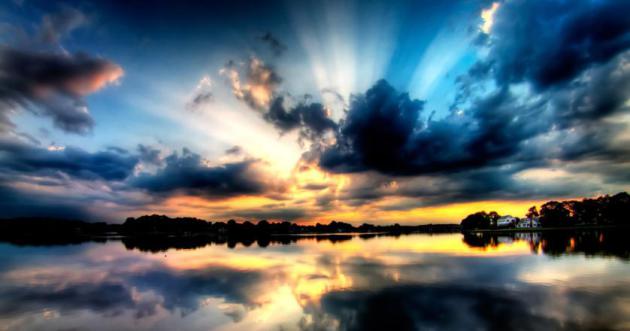






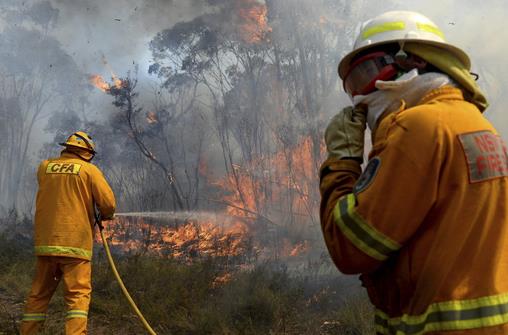
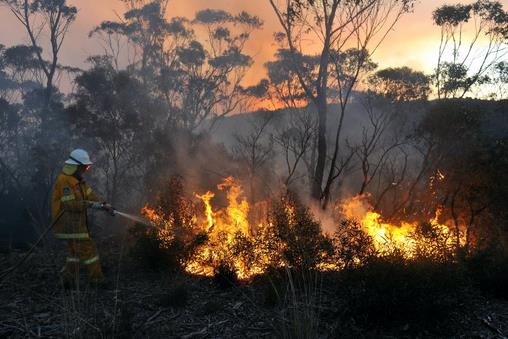

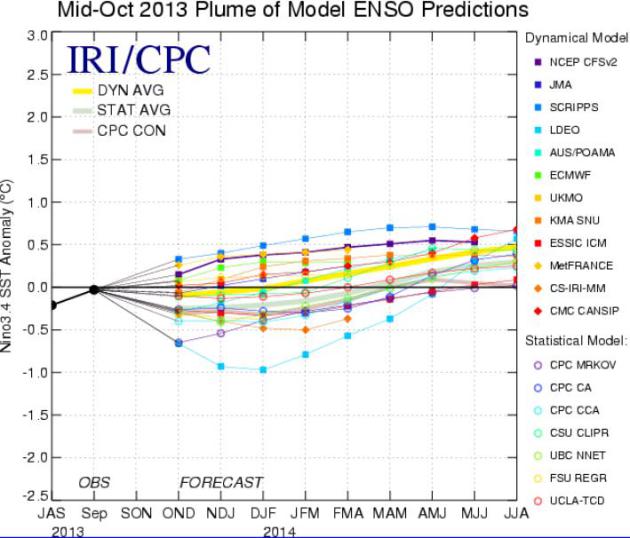
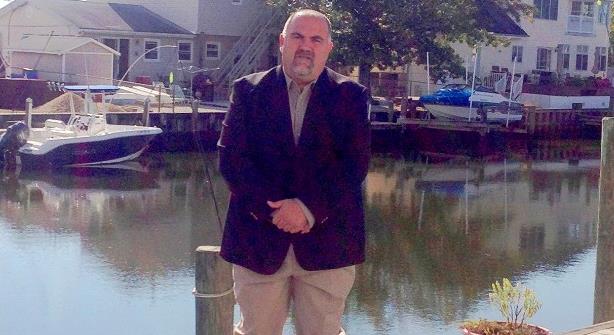

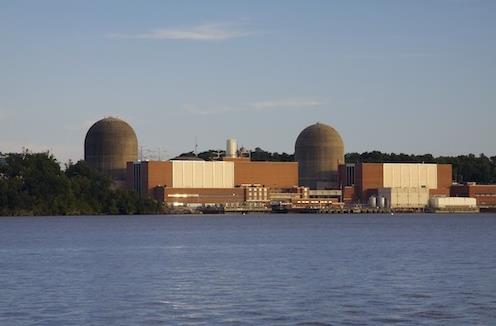




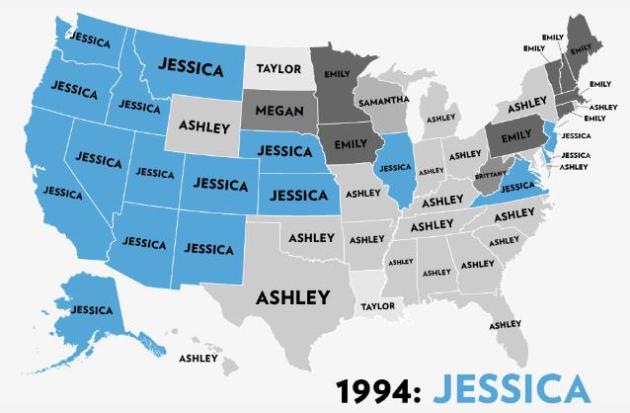




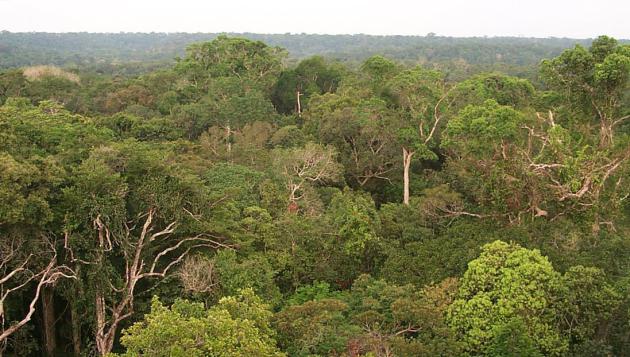
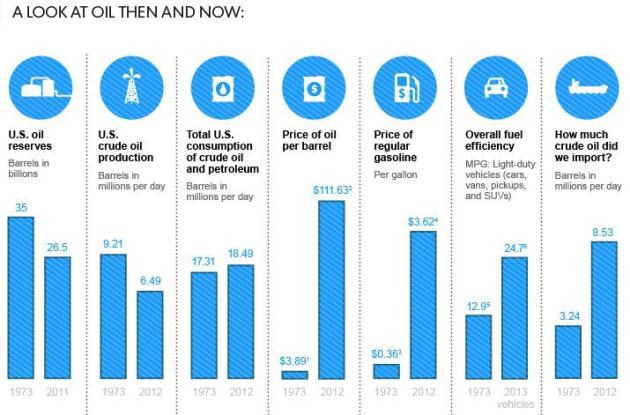 U.S. Oil Supply Looks Vulnerable 40 Years After Embargo.
Shale oil helps our overall energy needs, but we are still vulnerable
to disruptions in oil supply lines, according to this article at USA Today. Here's a snippet: "...We
remain very vulnerable," Panetta says, adding it wouldn't take much for
members of the Organization of Petroleum Exporting Countries (OPEC) —
which launched the 1973 embargo — or terrorist groups like al-Qaeda to
disrupt supplies. He says the U.S. is using less oil per capita than
decades ago and relying on the Middle East for a smaller share of its
imports, but those shifts almost don't matter. World oil prices, which
largely determine what Americans pay at the pump, remain high, because
developing countries including China and India are driving up demand.
With global oil supplies so tight as a result, even a small disruption
rattles the markets and causes price spikes. That's why, despite a 50%
increase in U.S. oil production since 2008, the price for a regular
gallon of gas remains so high. It costs, in inflation-adjusted dollars,
twice as much as 40 years ago..."
U.S. Oil Supply Looks Vulnerable 40 Years After Embargo.
Shale oil helps our overall energy needs, but we are still vulnerable
to disruptions in oil supply lines, according to this article at USA Today. Here's a snippet: "...We
remain very vulnerable," Panetta says, adding it wouldn't take much for
members of the Organization of Petroleum Exporting Countries (OPEC) —
which launched the 1973 embargo — or terrorist groups like al-Qaeda to
disrupt supplies. He says the U.S. is using less oil per capita than
decades ago and relying on the Middle East for a smaller share of its
imports, but those shifts almost don't matter. World oil prices, which
largely determine what Americans pay at the pump, remain high, because
developing countries including China and India are driving up demand.
With global oil supplies so tight as a result, even a small disruption
rattles the markets and causes price spikes. That's why, despite a 50%
increase in U.S. oil production since 2008, the price for a regular
gallon of gas remains so high. It costs, in inflation-adjusted dollars,
twice as much as 40 years ago..."